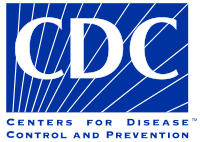
Photo from wikipedia
Purpose: A large, freestanding pediatric hospital in the southern United States saw a 117% increase in reported hospital acquired pressure injuries (HAPI) between 2013 and 2015, with the intensive care… Click to show full abstract
Purpose: A large, freestanding pediatric hospital in the southern United States saw a 117% increase in reported hospital acquired pressure injuries (HAPI) between 2013 and 2015, with the intensive care units being the units of highest occurrence. Design and Methods A quality improvement project was designed and implemented to assist with pressure injury prevention. Literature review confirmed that pediatric HAPIs are a challenge and that usage of bundles and user‐friendly guidelines/pathways can help eliminate barriers to prevention. The aim of this quality improvement project had two aims. First, to reduce HAPI incidence in the PICU by 10%. Second, to increase consistent usage of pressure injury prevention strategies as evidenced by a 10% increase in pressure injury bundle compliance. The third aim was to identify if there are differences in percentage of interventions implemented between two different groups of patients. Donabedian's model of Structure, Process, and Outcomes guided the development and implementation of this quality improvement project. Interventions focused on risk assessment subscale scores have the opportunity to mitigate specific risk factors and improve pressure injury prevention. Results: Through implementation of the nurse driven pathway there was as 57% decrease in reported HAPIs in the PICU as well as a 66% increase in pressure ulcer prevention bundle compliance. Conclusions: Implementation of the nurse driven pressure injury prevention pathway was successful. There was a significant increase in bundle compliance for pressure ulcer prevention and a decrease in reported HAPIs. Practice Implications: The pathway developed and implemented for this quality improvement project could be adapted to other populations and care settings to provide guidance across the continuum. HighlightsPressure injuries are a costly epidemic in healthcare, including pediatrics.Pathways should outline specific pressure injury prevention interventions.Pressure injury prevention pathway usage was improved compared to current practice.Utilization of a pathway showed reduced incidence of pressure injuries.
Journal Title: Journal of Pediatric Nursing
Year Published: 2018
Link to full text (if available)
Share on Social Media: Sign Up to like & get
recommendations!